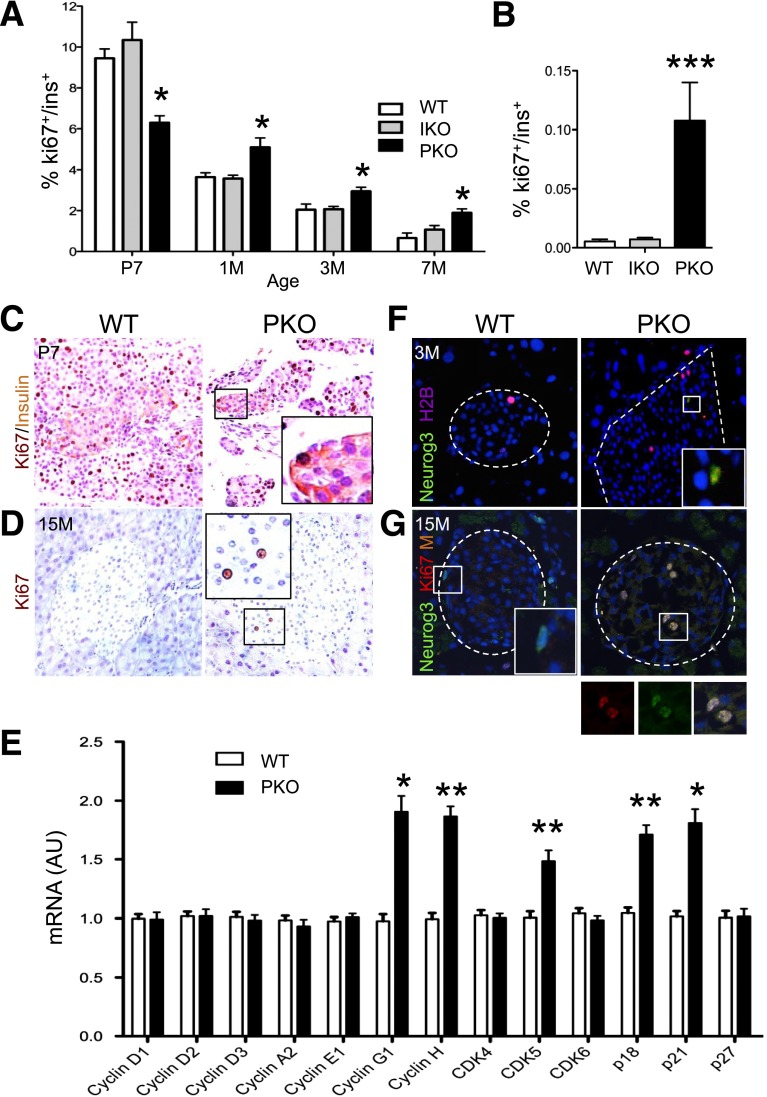Figure 3.
A self-replicating pool of endocrine progenitors in adult PKO mice. A: Quantification of Ki67+/insulin+ cells by flow cytometry in mice of the indicated ages and genotypes. We normalized the number of double-positive cells by the total number of insulin+ cells per pancreas (n = 6 each). B: Quantification of Ki67+/insulin+ cells by double immunohistochemistry in 12-month-old mice of the indicated genotype by manual counting, normalized by total number of insulin+ cells per pancreas (n = 4 each). C: Double immunohistochemistry with anti-Ki67 (dark brown) and anti-insulin antibodies (light brown) on pancreatic sections of 7-day-old mice (n = 4). Insets show representative insulin+ and/or Ki67+ cells. D: Immunohistochemistry with anti-Ki67 antibody (dark brown) on pancreas sections of 15-month-old mice (n = 4 each). Insets represent Ki67+ cells in islets. E: qPCR analysis of a panel of cell cycle regulatory genes in purified islets from control and PKO mice (n = 6 each). F: Immunofluorescence with anti-Neurog3 (green) and anti-H2B (purple) in pancreas sections from 3-month-old control and PKO mice (n = 4 each). Inset shows Neurog3+/H2B+ cells. G: Immunofluorescence with anti-Neurog3 (green) and anti-Ki67 (red) in pancreas sections from 15-month-old mice (n = 4 each). Insets show Neurog3+ and Neurog3+/Ki67+ cells. F and G: A dashed line is used to outline the islet. Data show means ± SEM. *P < 0.05, **P < 0.01, and ***P < 0.001 by Student t test. AU, arbitrary units; M, month; P, postnatal day.

